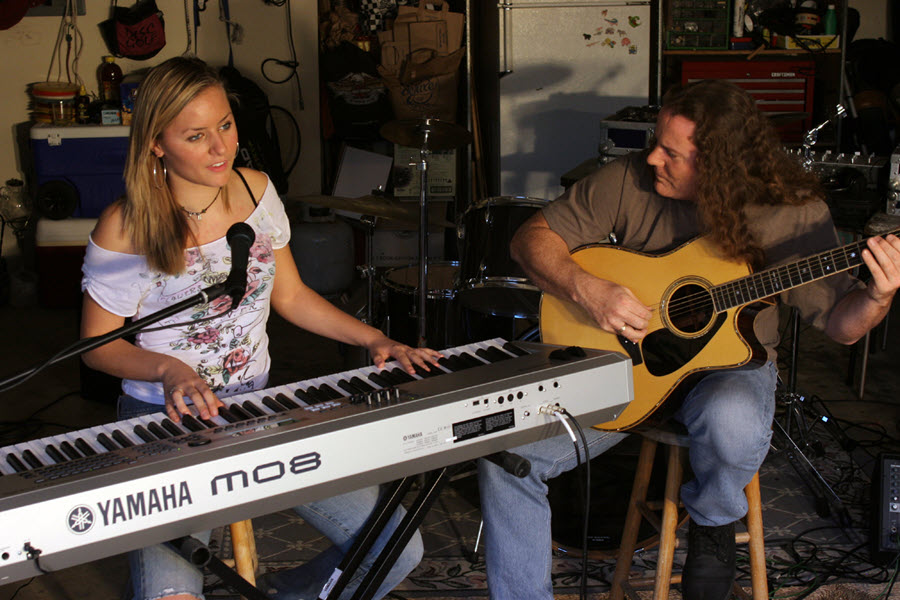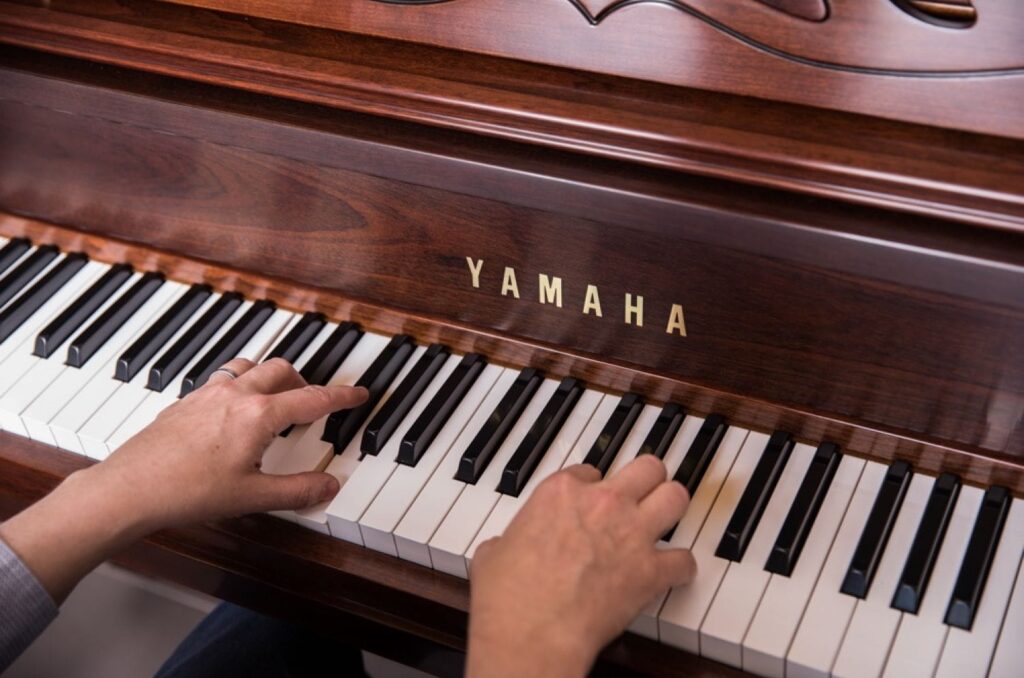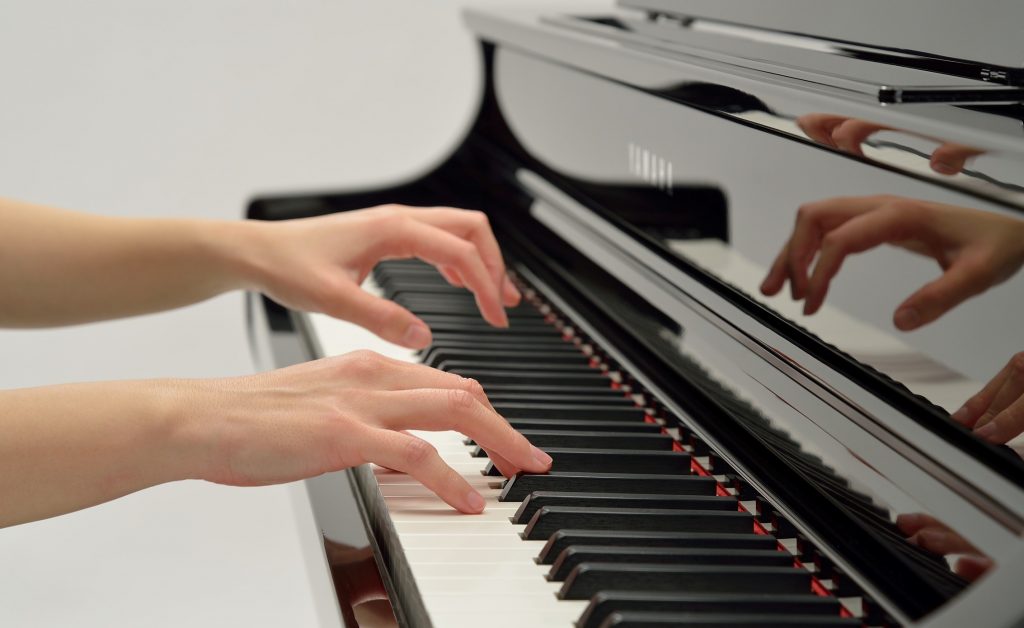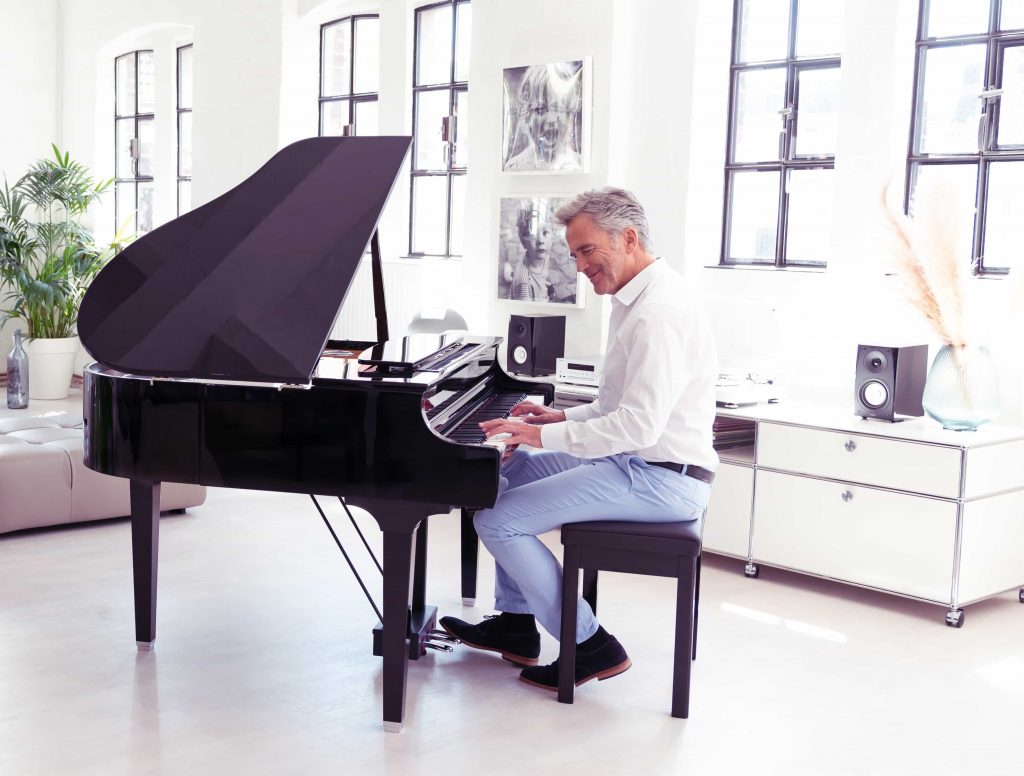How to Get Your Child Started On Keyboard
How and when to get your child involved in learning to play music.
It’s well known that learning to play a musical instrument at any age is good for you, both physically, mentally and socially, but it’s especially beneficial to a child’s development. Studies have shown that children who play an instrument do better in school, develop improved language skills, are likely to have more advanced physical coordination and emotional intelligence, and are socially well-balanced.
Keyboard or piano is an excellent choice as a starter instrument, as it is easy to produce a good sound right from the get-go. But you may be unsure of when it’s the right time to get your child started, and how to go about it. Here are the answers to both questions.
It’s Never Too Early
Answer # 1 is simple: It is never too early to expose your child to music. A 1993 study on how people listening to the music of Mozart exhibited a limited improvement in spacial recognition (the so-called “Mozart Effect”) inspired some new parents to begin playing the music of that composer to their baby while still in the womb, and later on as lullaby music for sleeping. Even though Mozart won’t magically make your baby smarter, playing soothing music by any composer during rest time for your child, and generally having a music-positive household, is a good thing.
This includes singing simple songs to your child such as Twinkle Twinkle, The Itsy Bitsy Spider and The Wheels On The Bus, which has long been an almost universal activity in pre-schools and homes around the globe. There’s a whole industry of artists making music for kids, such as Raffi, Sesame Street® and others that you should consider making part of your daily activities, same as meal time, play time and wind-down before sleep. And it’s important for you, as the parent, to be part of this by teaching your children the words, singing along and clapping together. Active involvement is key — you want to show your child that music is fun and an important part of your life … and therefore an important part of theirs too.
Organized Early Learning Involving Music (Ages 2-4)
Toddlers grow super-fast but most have not yet developed the hand size, motor skills and focus to start to play the piano, or any instrument for that matter. That said, they can certainly enjoy playing with some musical toys such as a simple keyboard or a fun piano mat.
Consider getting your child involved in a structured learning program that involves music. These kinds of programs usually get children clapping, playing with simple percussion instruments and participating in group activities designed to promote their physical development and their sound and rhythm recognition, as well as learning to enjoy interacting with other toddlers. Look to see if programs like Kindermusik, Music Together® or Musikgarten® are available in your area. These early learning methods involve both you and your child, and are highly beneficial and a lot of fun for you both.
Yamaha has been involved in music education like this for over 50 years, and the company’s Yamaha Music Schools offer a course called Music Wonderland that introduces three-year-olds to the sound and playing of a keyboard in an age-appropriate manner. Finally, it is possible that some schools in your area — especially music schools — may have toddler and early child classes you can enroll in.
First Exposure to Keyboards (Ages 5-7)
By the time your child starts attending pre-school you might want to start with an electronic portable keyboard that has some built-in lesson functions such as the Keys to Success and Phrase Repeat features offered by some Yamaha models. These kinds of instruments are both instructional and fun, and they have the advantage of offering a traditional white and black keyboard.
When your child starts regular school (usually at ages 6-7), he or she will become comfortable with sitting still for at least short periods of time while receiving instruction from a teacher, and learning new concepts on a daily/weekly basis. Depending on their physical development (it is commonly suggested that the child’s hand should be large enough for their fingers to be able to span the white notes from C up to G without having to stretch), this may the perfect time to introduce them to their first piano lessons.
In preparation for this, you should buy either an acoustic piano or a digital piano. If you opt for an acoustic piano, there are two types to pick from: a grand or an upright.
Grand pianos such as the Yamaha GB1K offer a rich, full sound with a powerful resonance and an expressive tone that brings out the subtle nuances of every note being played. However, these instruments are designed to be placed in the middle of a room and thus require a fair amount of space.
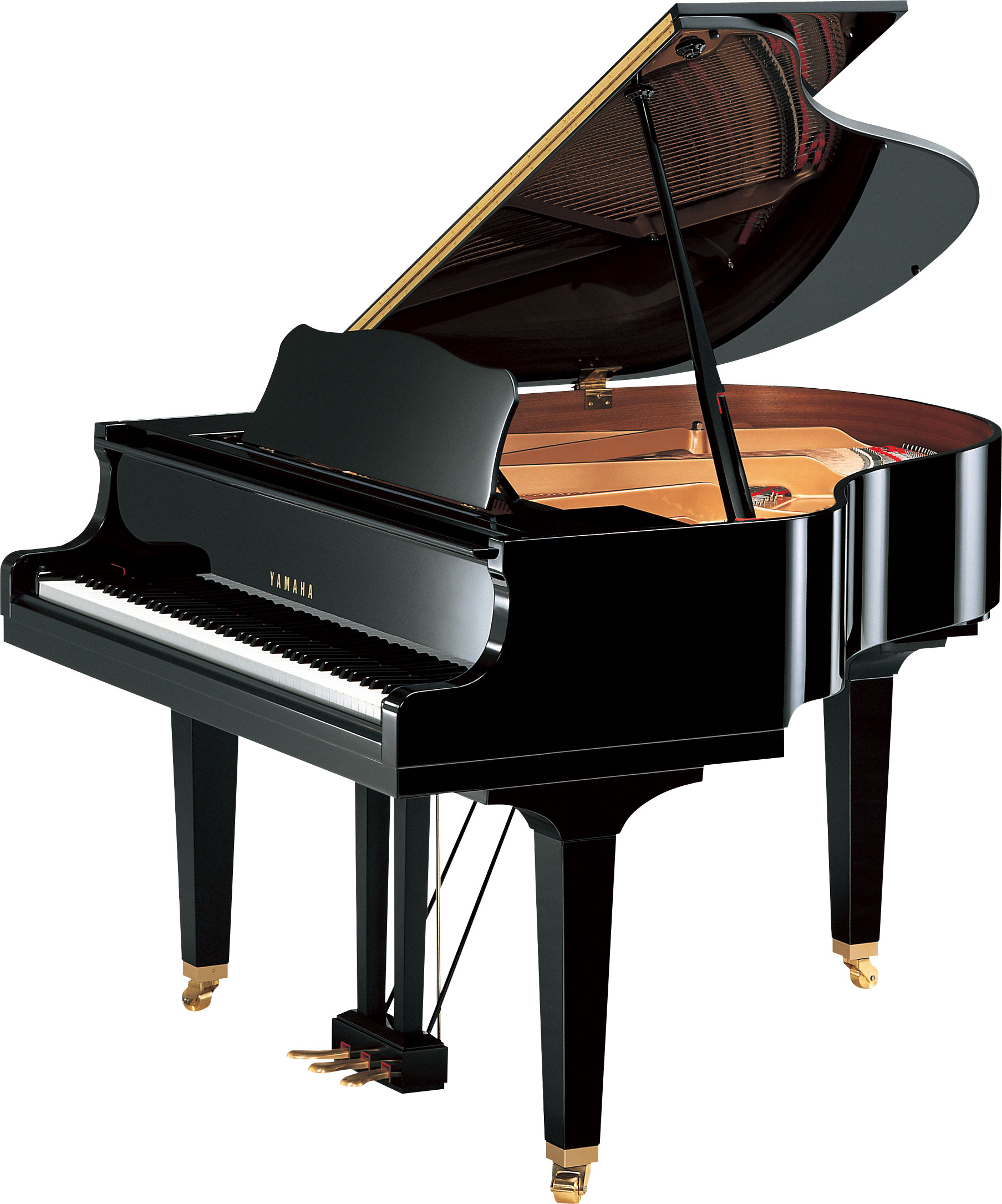
For many beginners, upright pianos such as Yamaha b Series models will work just fine.

Uprights are also more affordable than grand pianos and are designed to be placed against a wall, thus giving them a smaller footprint and requiring a lot less space.
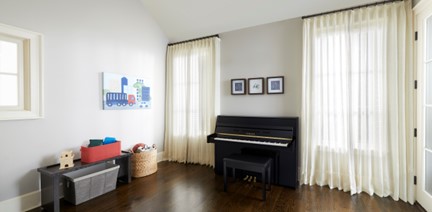
Whichever you choose, if you are going to buy a used acoustic piano, be sure to have someone knowledgeable (such as a local piano teacher or technician) help you to evaluate the instrument beforehand. It needs to be able to stay in tune and have no major defects. Bear in mind also that acoustic pianos of all varieties require periodic maintenance such as regular tunings in order to sound their best.
Another option is to purchase a digital piano such as a Yamaha Clavinova. These remarkable compact electronic keyboards faithfully recreate the sound and feel of an acoustic concert grand piano, but at a fraction of the cost — and with no maintenance required. Clavinova models such as the CSP-170 emulate the look of an upright piano, while others, such as the CVP-809GP, are designed to look like grand pianos, though unlike their acoustic counterparts, they can be placed anywhere in a room.


Digital pianos typically offer a wealth of advanced features such as the ability to record performances, connect microphones, and interface with smart devices. Some select Yamaha digital pianos (including the aforementioned Clavinova CSP-170) also have a Stream Lights function that makes learning even easier. All have built-in speakers, along with the bonus of a headphone jack so that your children can practice to their heart’s content without disturbing others in the household.
Finding A Teacher (Ages 7-9)
When looking for your child’s first keyboard or piano teacher, it is important that the instructor has specific experience working with small children. It takes special skills and understanding to keep a young child focused for more than a few minutes on any activity, and it is just as important to make the lessons fun as it is to convey the traditional steps of learning to play keyboard. Some teachers like to have the parent attend lessons as well, which you should consider doing whenever possible. After all, if you understand what is being taught and how to practice it, you can better support your child during their practice time.
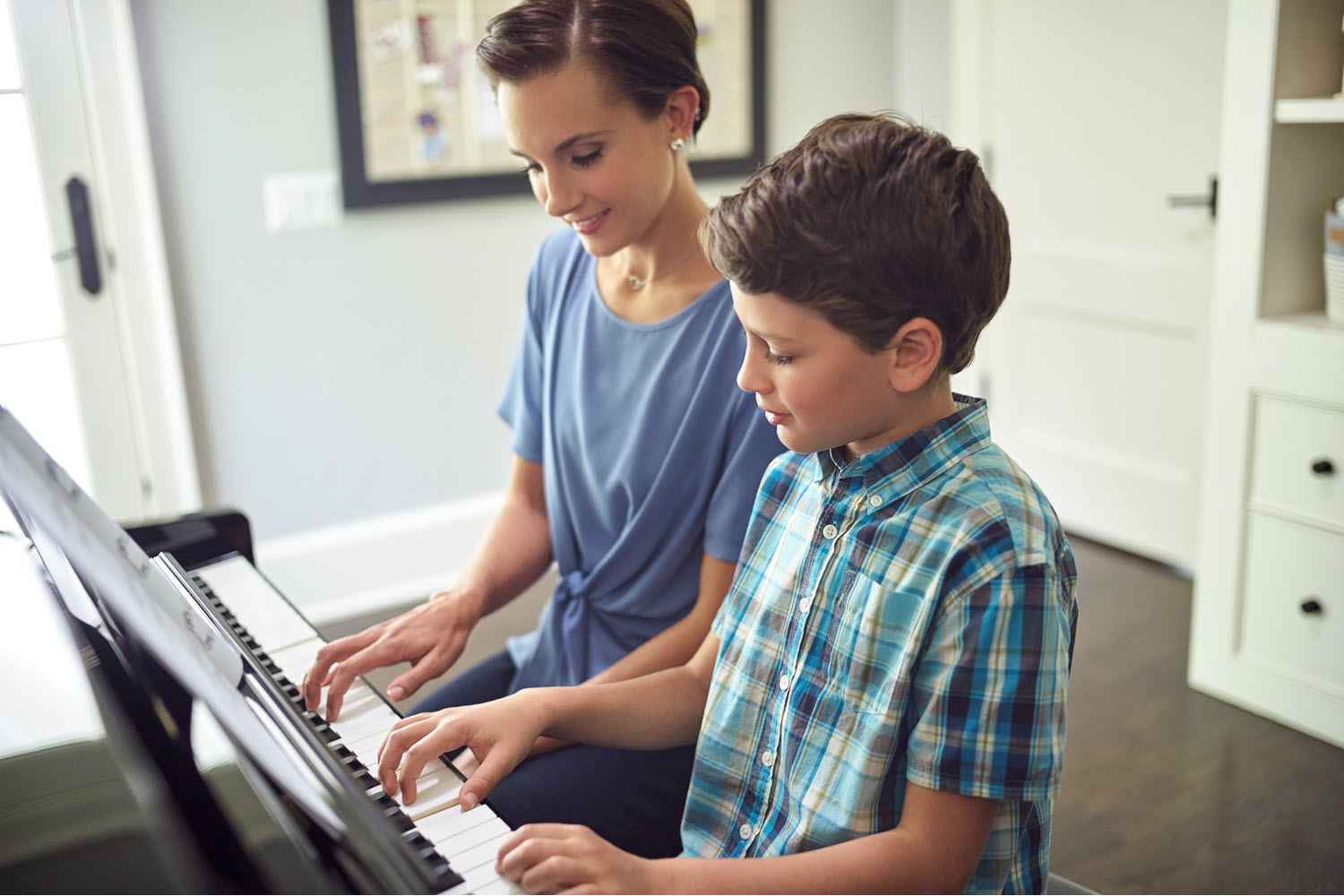
Another approach is to enroll in group lessons that teach beginning keyboard. This is a more social and fun way to get introduced to the mechanics and joy of playing a keyboard instrument like piano. Many of the schools mentioned earlier, including the Yamaha Music School, offer beginning instruction to children at this age. You can also search in your local area, as music stores and music schools may offer group instruction for kids as well.
What If My Child Is Slightly Older?
There is no rule that states your child must begin taking lessons at a specific age. If he or she starts to exhibit interest in music in their early teens, great! The only difference is that you won’t need to worry as much about finding a teacher that has early child experience and methods. To help stimulate your tween’s interest in piano/keyboard, you might want to get them a portable keyboard as a gift. These instruments have a wide variety of sounds, drum rhythms and other cool features that they can enjoy and will hopefully stimulate a further interest in playing.
Additional Learning Opportunities
Once your child has started lessons and is making progress, you might consider enrolling them in a summer camp that is focused on music-making and learning instruments. This will support their development and keep them interested by turning their instruction into a fun group activity with other like-minded kids. As a bonus, it will keep them actively involved in their music studies during the summer school break. Do a web search of “Children Summer Piano Camp” to find programs in your area. The nation-wide School Of Rock also has programs such as Little Wing that may be of value, as they tap into kids’ natural interest in popular music.
The bottom line is this: Anything you can do to promote, support, and be involved in your child’s musical journey will be time well spent.











